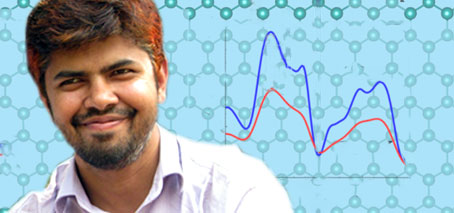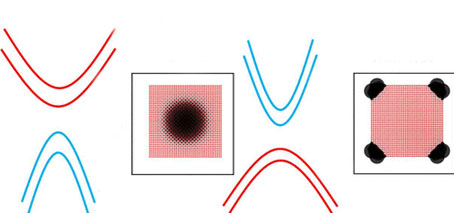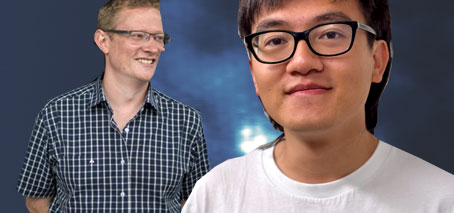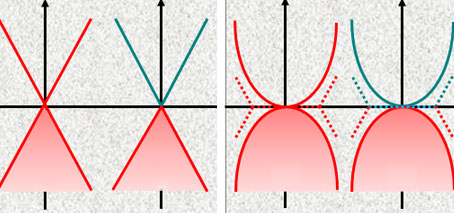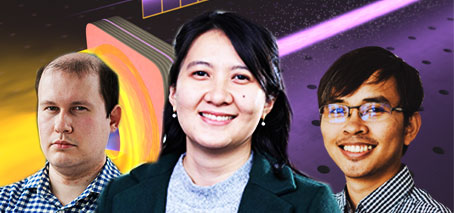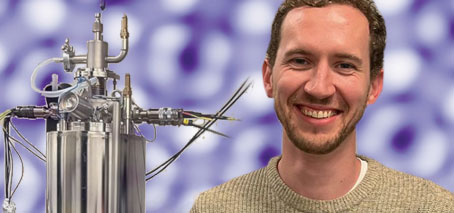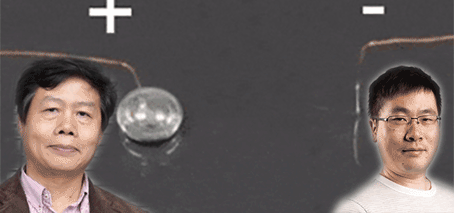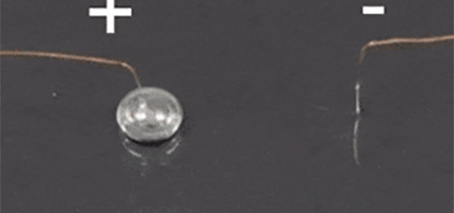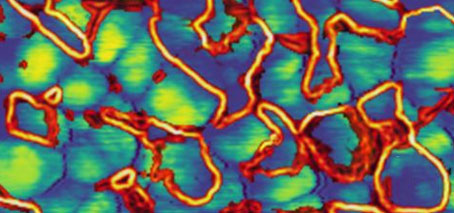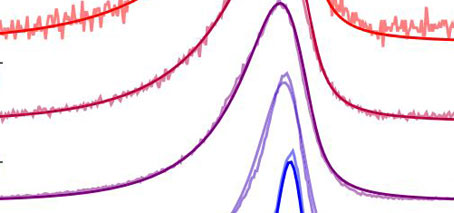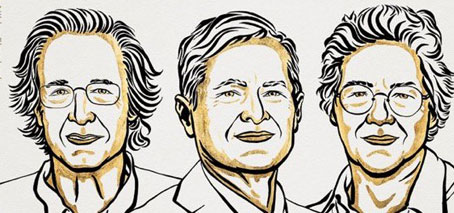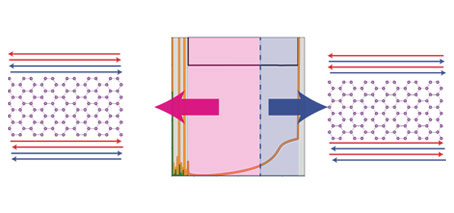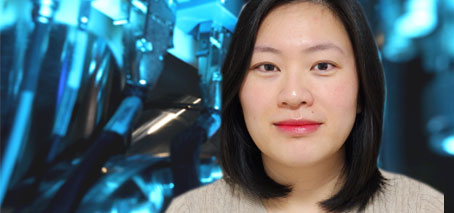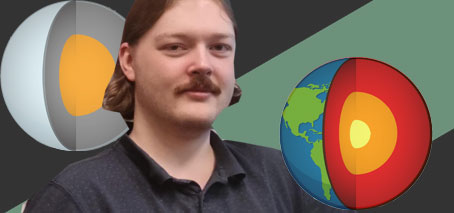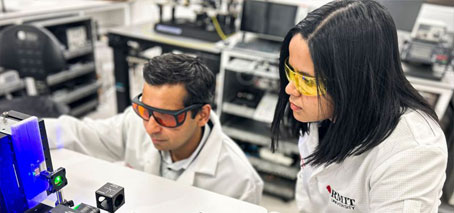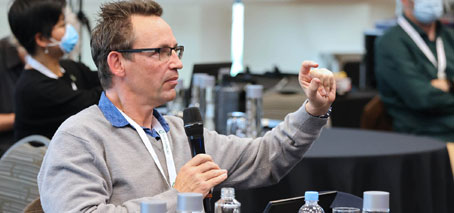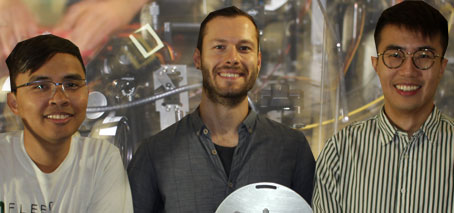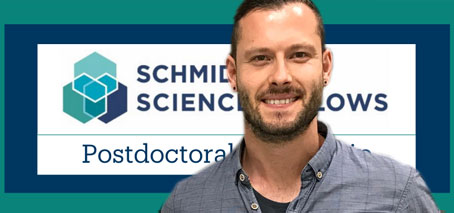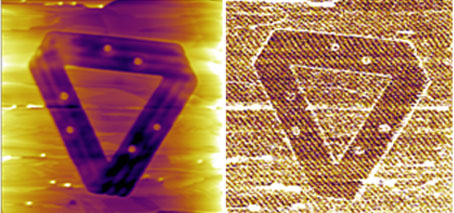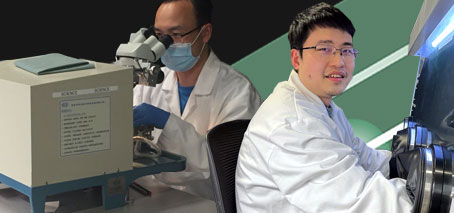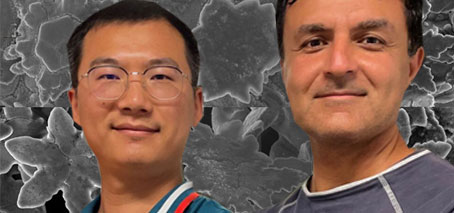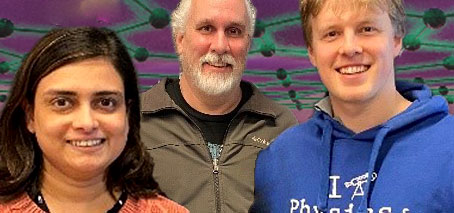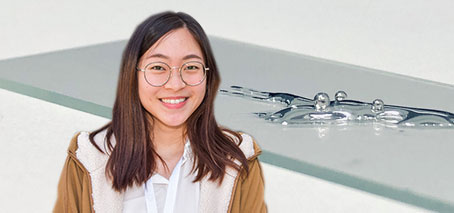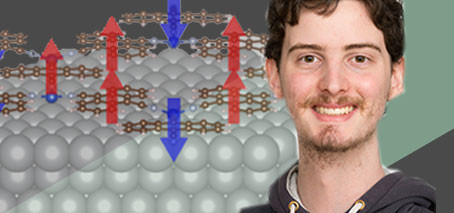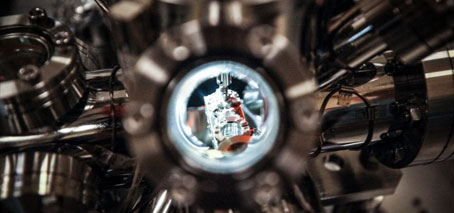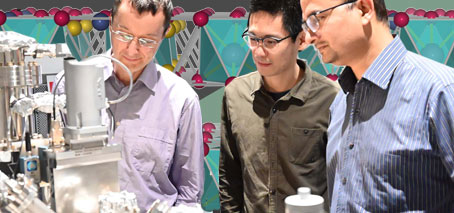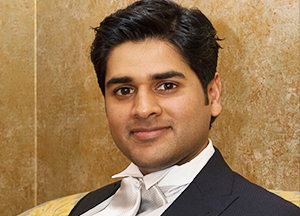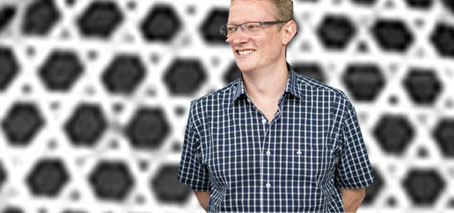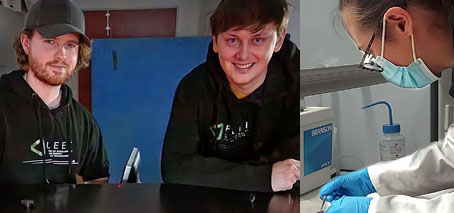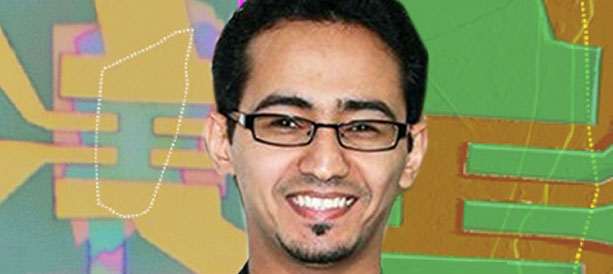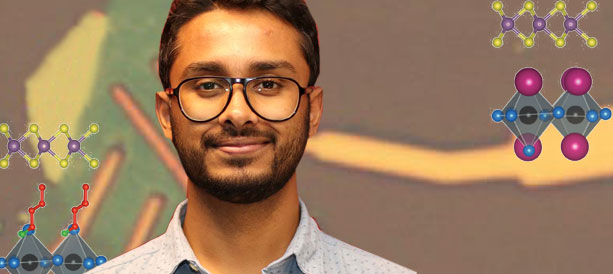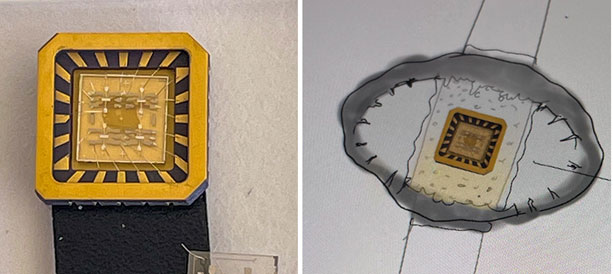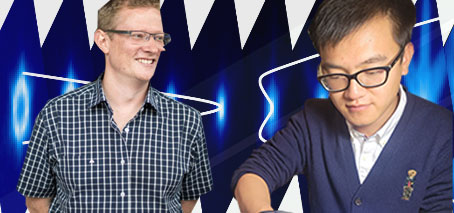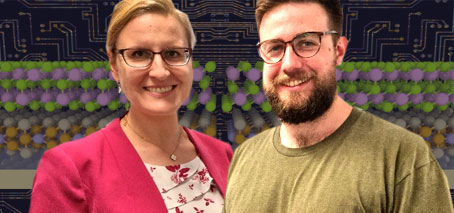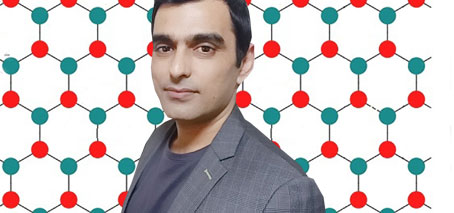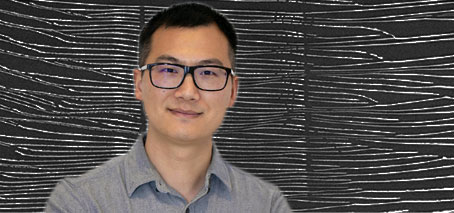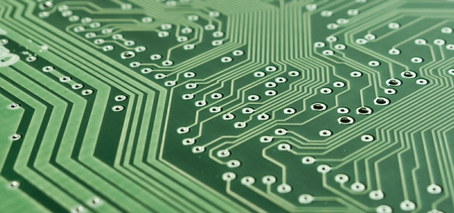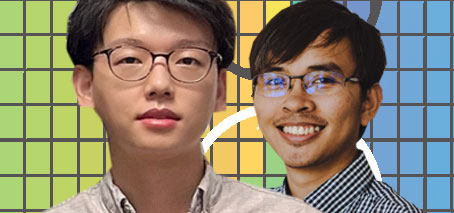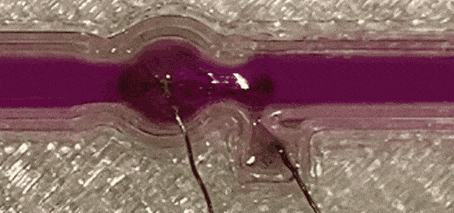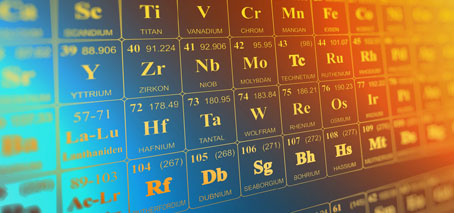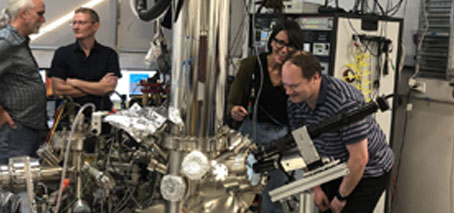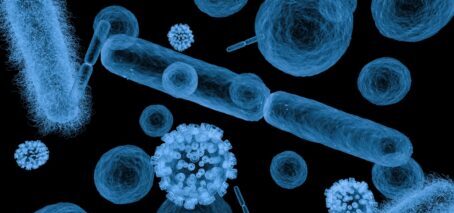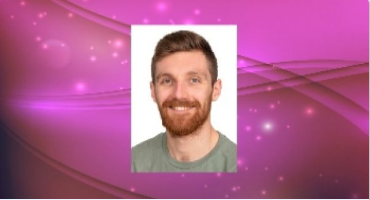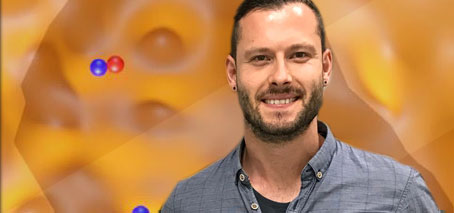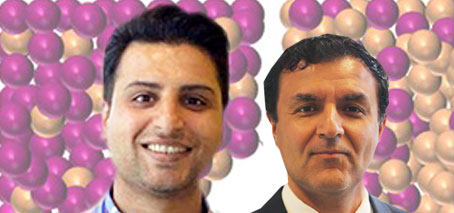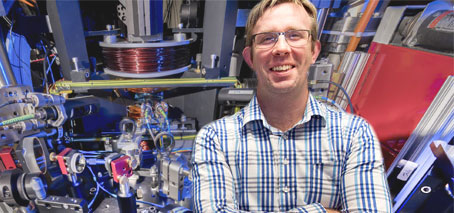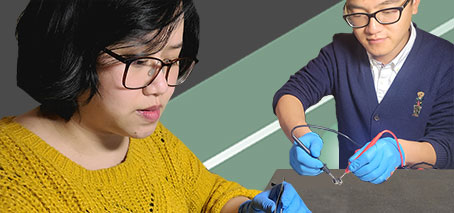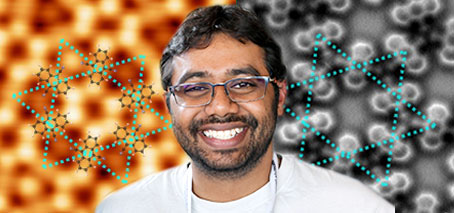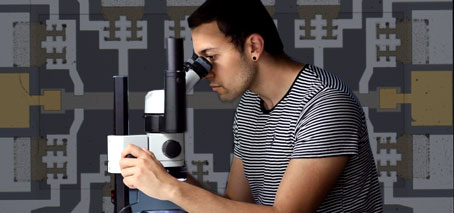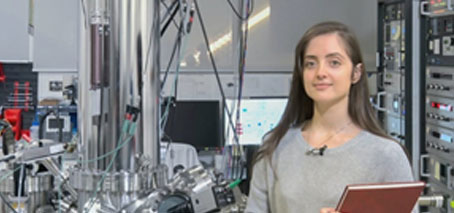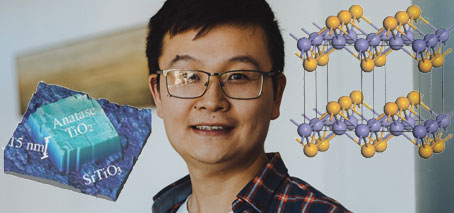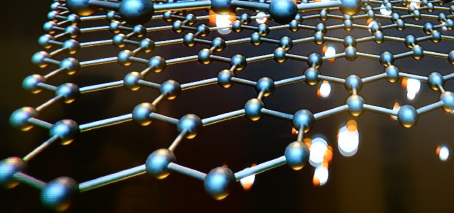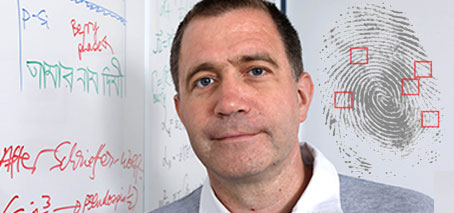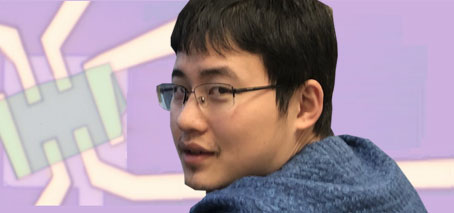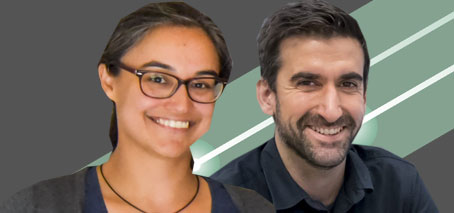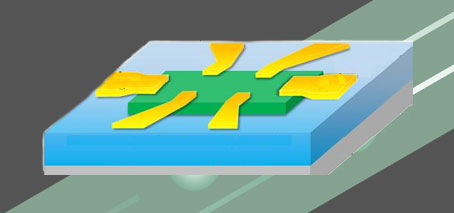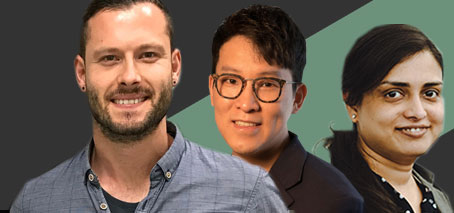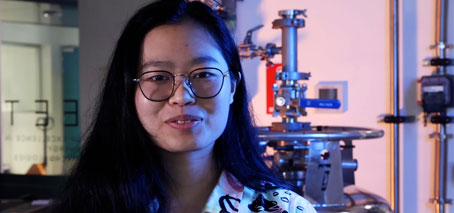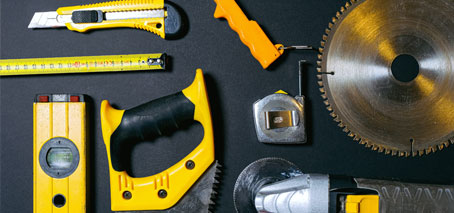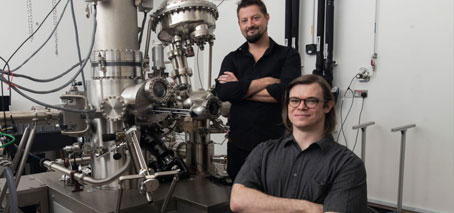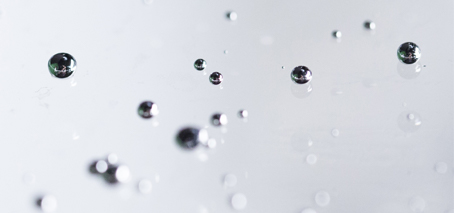Topological insulators raise the exciting the hope of realising lossless energy transport, which is true at ultralow temperatures. However, topological insulators fail to maintain this lossless ‘magic’ at room temperature. Researchers from Monash University, part of the FLEET Centre, have uncovered new insights into the efficiency of topological insulators, illuminating the significant disparity between their magic lossless energy transport at …
FLEET researchers unveil new approach to magnetic topological insulators
Researchers from Monash University, part of the FLEET Centre, have revealed a generic approach towards intrinsic magnetic second-order topological insulators. These materials are crucial for advancements in spintronics, an emerging field aiming at using spin degree of freedom to deliver information. Background Two-dimensional ferromagnetic semiconductors, such as CrI3, Cr2Ge2Te6, and VI3, have been extensively studied in recent years. These materials …
Overcoming magnetic disorder: towards low-energy topological electronics
Overcoming magnetic disorder is key to exploiting the unique properties of QAH insulators. The Monash-led team demonstrated that the breakdown in topological protection is caused by magnetic disorder, explaining previous observations that topological protection could be restored by application of stabilising magnetic fields. “The study paves a clear research pathway towards use of MTIs in low-energy topological electronics,” says …
Spin Gapless Semiconductors: Pioneering future of quantum materials and quantum technologies
FLEET researchers from the University of Wollongong have revisited the concept of spin gapless semiconductors (SGSs), one of the most fascinating materials classes in quantum condensed-matter physics, originally proposed by Xiaolin Wang in 2008. In SGSs, low energy bands constitute a spin gapless energy-momentum dispersion. I.e., gapless spectrum in one of the spin sectors, while a gapped spectrum in the …
Ultra-high spectral purity revealed in exciton-polariton laser
Ground-breaking research revealed the ultra-narrow linewidth of a novel type of laser that operates without population inversion. Exciton-polariton lasers, renowned for their low-power operation, have long tantalised researchers with their promise for practical low-energy applications. However, until now, a clean measurement of the laser’s linewidth, or spectral purity, has remained elusive. “The spectral purity is one of the defining characteristics …
Dark excitons shed new light on matter
A team of Monash researchers have uncovered for the first time the full effects of interactions between exciton-polaritons and their associated dark excitonic reservoir. Exciton-polaritons (‘polaritons’, for short) are hybrid mixtures of light and matter that inherit the best properties of both. They form in semiconductors sandwiched between two mirrors, through which a laser is shone. “Polaritons capture useful properties …
Surfaces on the move: dynamic liquefaction
The boundary between solid metal and liquid metal can be much less ‘solid’ than we ever suspected. RMIT researchers have discovered that the liquid-solid boundary can fluctuate back and forth, with metallic atoms near the surface breaking free from their crystal lattice. Observing a metal-alloy mass solidifying in a sea of liquid metal, the team was able to observe a …
When does a conductor not conduct? Switching a 2D metal-organic framework from an insulator to a metal
A switchable material based on electron-electron interactions. An Australian-led study has found unusual insulating behaviour in a new atomically-thin material – and the ability to switch it on and off. Materials that feature strong interactions between electrons can display unusual properties such as the ability to act as insulators even when they are expected to conduct electricity. These insulators, known …
Liquid-metal transfer from anode to cathode without short circuiting
University of Wollongong researchers achieved a significant milestone in novel soft-matter transport by demonstrating the transfer of liquid metal from an anode to a cathode without creating a short circuit, defying conventional expectations. The team led by Prof Xiaolin Wang unveils a method where liquid-metal (specifically gallium-based, room temperature liquid metal) anodes can flow towards cathodes with a small electrical …
Pioneering study achieves liquid-metal transfer via electrical current
first published at the University of Wollongong In a ground-breaking discovery, University of Wollongong (UOW) researchers, have reached a new milestone in soft-matter transport. The team, based at the UOW node of the ARC Center of Excellence in Future Low Energy Electronics Technology (FLEET), has successfully demonstrated the transfer of liquid metal from an anode to a cathode without short circuiting, defying …
Alumni interview: Bernard Field
Bernard Field was one of the earliest of FLEET PhD students, joining the Centre in 2018 originally as an Honours student, then a PhD student in 2019 under Agustin Schiffrin and Nikhil Medhekar. His PhD research focused on correlated electrons in a frustrated 2D lattice, within FLEET’s theme 1. We interviewed Bernard about his career path after leaving FLEET (he …
Infrastructure funding for FLEET researchers
This month’s ARC infrastructure funding round saw FLEET researchers across five universities on teams awarded additional funding towards research facilities, including significant new imaging resources in South Australia and NSW. Pankaj Sharma, initially a FLEET Research Fellow at UNSW and now a Centre AI at Flinders University (South Australia), will help develop new, state-of-the-art atomic force microscopy (AFM) facilities for the …
Novel approach to advanced electronics, data storage with ferroelectricity
Published first at Flinders University Latest research from Flinders University and UNSW Sydney, published in the American Chemical Society ACS Nano journal, explores switchable polarization in a new class of silicon compatible metal oxides and paves the way for the development of advanced devices including high-density data storage, ultra low energy electronics, and flexible energy harvesting and wearable devices. The …
Solving quantum mysteries: New insights into 2D semiconductor physics
Researchers from Monash University have unlocked fresh insights into the behaviour of quantum impurities within materials. The new, international theoretical study introduces a novel approach known as the ‘quantum virial expansion,’ offering a powerful tool to uncover the complex quantum interactions in two-dimensional semiconductors. This breakthrough holds potential to reshape our understanding of complex quantum systems and unlock exciting future …
Nobel Prize for Ferenc Krausz in attosecond physics
Congratulations Prof Ferenc Krausz (MPQ) awarded the Nobel Prize in Physics today for his work in attosecond physics. Prof Krausz is the Director of the Max Planck Institute of Quantum Optics (MPQ). As a FLEET Partner Investigator, along with CI A/Prof. Agustin Schiffrin (Monash) and AI Nick Karpowicz (MPQ), Prof Krausz is involved in FLEET’s Research Theme 3, using ultrashort waveform-controlled laser …
Examining the superconducting diode effect
A collaboration of FLEET researchers from the University of Wollongong and Monash University have reviewed the superconducting diode effect, one of the most fascinating phenomena recently discovered in quantum condensed-matter physics. A superconducting diode enables dissipationless supercurrent to flow in only one direction, and provides new functionalities for superconducting circuits. This non-dissipative circuit element is key to future ultra-low energy …
‘Topological gardening’ to achieve unexpected spin transport
‘Trimming’ the edge-states of a topological insulator yields a new class of material featuring unconventional ‘two way’ edge transport in a new theoretical study from Monash University, Australia. The new material, a topological crystalline insulator (TCI) forms a promising addition to the family of topological materials and significantly broadens the scope of materials with topologically nontrivial properties. Its distinctive reliance …
Listening to nanoscale earthquakes
A recent UNSW-led paper published in Nature Communications presents an exciting new way to listen to avalanches of atoms in crystals. The nanoscale movement of atoms when materials deform leads to sound emission. This so-called crackling noise is a scale-invariant phenomenon found in various material systems as a response to external stimuli such as force or external fields. Jerky material …
Space has gotten small with metallic, planet-like nanodroplets
Homogenous liquid-metal nanodroplets achieved with high-temperature molten salt Australian researchers put planets in the palm of the hand Liquid metal, planet-like nanodroplets are successfully formed with a new technique developed at RMIT University, Australia. Like our own Planet Earth, the nanodroplets feature an outer ‘crust’, a liquid metal ‘mantle’, and a solid ‘core’. The solid intermetallic core is the key …
Tiny device mimics human vision and memory abilities
First published at RMIT Researchers have created a small device that ‘sees’ and creates memories in a similar way to humans, in a promising step towards one day having applications that can make rapid, complex decisions such as in self-driving cars. The neuromorphic invention is a single chip enabled by a sensing element, doped indium oxide, that is thousands of …
Alex Hamilton, new Industry Laureate Fellow
Unleashing the combined power of electrons and holes for better quantum computing Congratulations to FLEET Deputy Director Prof Alex Hamilton, who has been named an Industry Laureate Fellow by the ARC. Alex and his team at UNSW receive $3.8 million towards ground-breaking silicon-based quantum-computer technology to dramatically speed up computation, enabling Australia to maintain its global lead in quantum technologies. …
Hybrid particles surprise with negative mass
First published Australian National University A surprise observation of negative mass in exciton-polaritons has added yet another dimension of weirdness to these strange light-matter hybrid particles. Dr Matthias Wurdack, Dr Tinghe Yun and Dr Eliezer Estrecho from the Department of Quantum Sciences and Technology (QST) were experimenting with exciton polaritons when they realised that under certain conditions the dispersion became …
Congratulations Matthias Wurdack: Schmidt Science Fellow
Congratulations to Dr Matthias Wurdack (FLEET/ANU), who has received a Schmidt Science Fellowship to develop artificial retinas. Matthias started his’ PhD at ANU in 2018, working with FLEET CI Elena Ostrovskaya to create, investigate and engineer the properties of hybrid light-matter particles in atomically-thin semiconductors with the aim to realise room temperature superfluidity based on this material platform, and understand and elevate …
Combining irradiation and lithography to engineer advanced conducting materials
A process has been developed to engineer nanoscale arrays of conducting channels for advanced scalable electronic circuitry Using ion implantation and lithography, investigators created patterns of topological surface edge states on a topological material that made the surface edges conductive while the bulk layer beneath remained an insulator Low energy ion implantation, neutron and X-ray reflectometry techniques at ANSTO supported …
Engineering a novel supersolid state using layered 2D materials
Can a solid be a superfluid? Bilayer excitons form a quantum supersolid A collaboration of Australian and European physicists predict that layered electronic 2D semiconductors can host a curious quantum phase of matter called the supersolid. The supersolid is a very counterintuitive phase indeed. It is made up of particles that simultaneously form a rigid crystal and yet at the …
Destroying the superconductivity in a kagome metal
Electrically controlled superconductor-to-“failed insulator” transition, and giant anomalous Hall effect in the kagome metal CsV3Sb5 A new RMIT-led international collaboration published in February has uncovered, for the first time, a distinct disorder-driven bosonic superconductor-insulator transition. The discovery outlines a global picture of the giant anomalous Hall effect and reveals its correlation with the unconventional charge density wave in the AV3Sb5 …
Turning up the heat on topological thermoelectrics: FLEET Translation funding towards new chemical synthesis
FLEET funding is supporting the next step in possible translation of thermoelectrics research towards commercialisation in future generators, electronics, vehicles, human-wearable and environmental sensors, and smart electronics Thermoelectric materials offer potential solutions to heat-management challenges common to many electronics technologies. Thermoelectrics are solid-state semiconductors that can convert heat gradients into useful electricity (known as the Seebeck effect). They can also …
Let it snow inside liquid metals
Liquid metals are enigmatic metallic solvents. A new UNSW-led study of metallic crystals growing in a liquid metal solvent finds similarities and differences between liquid-metal solvents and more-familiar crystal-growth environments (such as water or the atmosphere) in which snowflakes or crystals of dissolved substances form. We can dissolve a large amount of sugar in water at high temperatures. But as …
A shield for 2D materials that adds vibrations to reduce vibration problems
Ultra-thin, liquid-metal-printed oxide can improve performance of your transistor by suppressing vibrational resistance Counterintuitively, this occurs by adding extra phonons (vibrations) into the system This oxide can protect your transistor against further processing Monash University researchers have demonstrated a new, counterintuitive way to protect atomically-thin electronics – adding vibrations, to reduce vibrations. By ‘squeezing’ a thin droplet of liquid gallium, …
FLEET translation: extending LED device lifetime with liquid-metal printed oxides
2D oxide-based LED encapsulation extending device lifetime FLEET translation funding is supporting the next step in a liquid-metal printing application with significant commercial promise, in a project being led by RMIT PhD candidate Patjaree Aukarasereenont. Light-emitting diodes (LEDs) play a crucial role in modern society – from mobile phones to LED billboards and home lighting, LEDs are ubiquitous. There are, …
Magnetism or no magnetism? The influence of substrates on electronic interactions
How substrates influence magnetism in 2D materials Interaction-induced magnetism in metal-organic frameworks on substrates A new study at Monash University illustrates how substrates affect strong electronic interactions in two-dimensional metal-organic frameworks. Materials with strong electronic interactions can have applications in energy-efficient electronics. When these materials are placed on a substrate, their electronic properties are changed by charge transfer, strain, and …
A chemical reaction as good as gold
Gold may hold the key to unlocking an elusive but highly desirable reaction pathway. A new Australian-led stud finds gold atoms could be key to unlocking organic reactions. Organic molecules are the building blocks for materials we use every day – from our clothes and coffee cups to the screen displays of our phones. Controlling reactions of these organic molecules …
Electron Liquids on the Cutting Edge
FLEET Investigator A/Prof Bent Weber, and his team at NTU Singapore, have demonstrated unprecedented control of a one-dimensional flow of electrons in a rare quantum state that physicists have sought to understand for over half a century. The technique suggests a path to more-robust and more-accurate quantum computers. From: Nanyang Technical University, Singapore As you walk in a crowded shopping …
A new era of two-dimensional ferroelectrics
A UNSW/Flinders University paper published recently in Nature Reviews Materials presents an exciting overview of the emerging field of 2D ferroelectric materials with layered van-der-Waals crystal structures: a novel class of low-dimensional materials that is highly interesting for future nanoelectronics. Future applications include ultra-low energy electronics, high-performance, non-volatile data-storage, high-response optoelectronics, and flexible (energy-harvesting or wearable) electronics. Structurally different from …
A drop in the sea of electrons: Understanding Fermi polarons and their interactions
Multidimensional coherent spectroscopy (MDCS) on monolayer WS2 reveals Fermi polaron interactions Phase-space filling drives new optical selection rules, where excitons compete for the same electron Identification of a novel, cooperatively-bound exciton-exciton-electron state Recent Australian-led research has provided a world’s first measurement of interactions between Fermi polarons in an atomically-thin 2D semiconductor, using ultrafast spectroscopy capable of probing complex quantum materials. …
Trapping polaritons in an engineered quantum box
High exciton-polariton density in an engineered quantum box Possible pathway to future, ultra energy-efficient technologies Australian researchers have engineered a quantum box for polaritons in a two-dimensional material, achieving large polariton densities and a partially ‘coherent’ quantum state. New insights coming from the novel technique could allow researchers to access striking ‘collective’ quantum phenomena in this material family, and enable …
New Chief Investigator Priyank Kumar
Congratulations to Priyank Kumar at the School of Chemical Engineering, UNSW Sydney, who becomes a new Chief Investigator within FLEET. “I look forward to contributing to the objectives of FLEET through both fundamental and translational research,” said Priyank. “I would like to thank Michael Fuhrer, Kourosh Kalantar-zadeh and the FLEET team for providing me this opportunity.” Priyank has been an …
Future Fellowship Mark Edmonds
Kagome metals: From Japanese basket to next generation electronic devices FLEET AI Dr Mark Edmonds received an ARC Future Fellowship in this week’s announcement by the Minister. The new ARC Fellowship will support Mark’s work investigating a new type of 2D material that is very promising for faster, more energy-efficient future electronic devices. ‘Kagome’ metals have a topological non-trivial nature …
What you see is what you get with pre-characterised TMDs: FLEET Translation Program
First project approved for FLEET Translation Program funding PhD candidates Mitch Conway, Abby Goff, and Jack Muir have recently been awarded $31,000 in FLEET’s first round of funding from the FLEET Translation Program (FTP). Their cross-node collaboration between Swinburne and RMIT aims to create a catalogue of high quality 2D materials, namely transition metal dichalcogenides (TMDs) and their heterostructures. …
Manipulating interlayer magnetic coupling in van der Waals heterostructures
Electrical control of exchange bias effect in FePS3-Fe5GeTe2 van der Waals heterostructures via proton intercalations A RMIT-led international collaboration published this week has observed, for the first time, electric gate-controlled exchange-bias effect in van der Waals (vdW) heterostructures, offering a promising platform for future energy-efficient, beyond-CMOS electronics. The exchange-bias (EB) effect, which originates from interlayer magnetic coupling, has played a …
The hetero-interface is the device: a computational approach
Designing hetero-interfaces towards new optoelectronic functionalities using large-scale computations Assembling ‘Lego-like’ 2D ‘heterostructures’ can give rise to emergent properties and functionalities very different from the intrinsic characteristics of the constituents. Density functional theory (DFT)-based band-structure calculations can shed light on interfacial properties of different heterostructures. Interface properties of 2D perovskite/TMD heterostructures Heterostructures based on different 2D materials have resulted in …
Brilliant alternative uses for diamond showcased in concept jewellery
QUT/FLEET researcher A/Prof Dongchen Qi has joined forces with an Australian jewellery designer to showcase the brilliance of diamond in medical, scientific, and other applications. Diamond does not naturally conduct electricity, but Professor Qi, from the QUT Centre of Material Science, led research to make it both conductive and controllable as a high-capacity semiconductor. Semiconductors conduct or insulate electrical signals …
Topological superconductors: fertile ground for elusive Majorana particle
Majorana fermions promise information technology with zero resistance A new, multi-node FLEET review investigates the search for Majorana fermions in iron-based superconductors. The elusive Majorana fermion, or ‘angel particle’ proposed by Ettore Majorana in 1937, simultaneously behaves like a particle and an antiparticle – and surprisingly remains stable rather than being self-destructive. Majorana fermions promise information and communications technology with …
Liquid platinum at room temperature: The ‘cool’ catalyst for a sustainable revolution in industrial chemistry
In an Exciton Science/FLEET study, researchers have been able to use trace amounts of liquid platinum to create cheap and highly efficient chemical reactions at low temperatures, opening a pathway to dramatic emissions reductions in crucial industries. When combined with liquid gallium, the amounts of platinum required are small enough to significantly extend the earth’s reserves of this valuable metal, …
Making a ‘sandwich’ out of magnets and topological insulators, potential for lossless electronics
Designer heterostructure is a potential high-temperature QAHE, where a topological material is sandwiched between two ferromagnets A Monash University-led research team has discovered that a structure comprising an ultra-thin topological insulator sandwiched between two 2D ferromagnetic insulators becomes a large-bandgap quantum anomalous Hall insulator. Such a heterostructure provides an avenue towards viable ultra-low energy future electronics, or even topological photovoltaics. …
Together we’re stronger: developing a new layered material for future electronics
A new RMIT-led study stacks two different types of 2D materials together to create a hybrid material providing enhanced properties. This hybrid material possesses valuable properties towards use in future memory and electronic devices such as TVs, computers and phones. Most significantly, the electronic properties of the new stacked structure can be controlled without the need for external strain, opening …
A zigzag blueprint for topological electronics
A collaborative study led by the University of Wollongong confirms switching mechanism for a new, proposed generation of ultra-low energy ‘topological electronics’. Based on novel quantum topological materials, such devices would ‘switch’ a topological insulator from non-conducting (conventional electrical insulator) to a conducting (topological insulator) state, whereby electrical current could flow along its edge states without wasted dissipation of energy. …
Bonding exercise: quantifying biexciton binding energy
Two-quantum multidimensional coherent spectroscopy (2Q-MDCS) quantifies precise biexciton binding energy Applications in future devices based on biexcitons in TMDCs A rare spectroscopy technique performed at Swinburne University of Technology directly quantifies the energy required to bind two excitons together, providing for the first time a direct measurement of the biexciton binding energy in WS2. As well as improving our fundamental …
Superfluids provide new insight into turbulence
First published at EQUS: the ARC Centre of Excellence for Engineered Quantum Systems Eddies in an exotic liquid known as a superfluid merge to form large vortices, analogous to how cyclones form in the turbulent atmosphere. The new research, by a team from The University of Queensland, EQUS and FLEET will be important for emerging technological applications of superfluidity, such …
Liquid metals, surface patterns, and the Romance of the Three Kingdoms
“The long divided, must unite; long united, must divide. Thus it has ever been.” The opening lines of the great Chinese historical novel Romance of the Three Kingdoms condense its complex and spectacular stories into a coherent pattern, that is, power blocs divide and unite cyclically in turbulent battle years. A good philosophy or theorem has general implications. Now, published …
Beyond scifi: Manipulating liquid metals without contact
In a landmark discovery, FLEET University of Wollongong (UOW) researchers have realised the non-contact manipulation of liquid metal. The metals can be controlled to move in any direction, and manipulated into unique, levitated shapes such as loops and squares by using a small voltage and a magnet. The liquid metal used is galinstan, an alloy of gallium, indium and tin, …
Trapping vortices in thin superfluid films
Physicists at the University of Queensland have shed light upon how tiny whirlpools (vortices) get stuck to obstacles in superfluids. Superfluids are a quantum substance that can flow without viscosity and hence do not slow down due to friction. A second defining feature of superfluids is that they only support quantised rotation – the vortices can only spin with strength …
Negative capacitance in topological transistors could reduce computing’s unsustainable energy load
Australian researchers have discovered that negative capacitance could lower the energy used in electronics and computing, which represents 8% of global electricity demand. The researchers at four universities within the ARC Centre of Excellence in Future Low-Energy Electronics Technologies (FLEET) applied negative capacitance to make topological transistors switch at lower voltage, potentially reducing energy losses by a factor of ten …
Probing quantum gases with spectroscopy (Nature review)
December’s edition of Nature Physics is dedicated to ultracold quantum technologies, including a review of spectroscopic probes of quantum gases by FLEET’s Chris Vale (Swinburne), with MIT’s Martin Zwierlein. Ultracold gases are a laboratory for precision, many-body physics – delivering a wealth of insights into collective quantum phenomena, with direct implications for nuclear and condensed-matter physics. Spectroscopic techniques can probe …
Losing isn’t always bad: gaining topology from loss
Generating topology from loss in hybrid light-matter particles Observation of new non-Hermitian topological invariant in exciton-polariton system Losing particles can lead to positive, robust effects. An international collaboration has demonstrated a novel topology arising from losses in hybrid light-matter particles, introducing a new avenue to induce the highly-prized effects inherent to conventional topological materials, which can potentially revolutionise electronics. Led …
No more moving parts: Liquid metal enabled chemical reactors
Liquid-metal machines could wipe out maintenance issues for continuous flow reactors. Metals that are liquid at room temperature, such as gallium and its alloys, are attractive materials due to their unique electrical, thermal and fluidic properties. In a study published today, a research team led by UNSW, Sydney has shown that liquid metals can offer their characteristics to the pharmaceutical and chemical …
Having your cake and eating it too: double-dosing induces magnetism while strengthening electron quantum oscillations in a topological insulator
Harnessing massive Dirac fermions in dual-magnetic-ion-doped Bi2Se3 topological insulator showing extremely strong quantum oscillations in the bulk. Double doping induces a gap for the topological surface state. A University of Wollongong-led team across three FLEET nodes has combined two traditional semiconductor doping methods to achieve new efficiencies in the topological insulator bismuth-selenide (Bi2Se3), Two doping elements were used: samarium (Sm) …
Welcoming Simon Granville (MacDiarmid) new FLEET Partner Investigator
Welcome to FLEET’s long-time collaborator Dr Simon Granville, who this month joins the Centre as a Partner Investigator. Simon is a Principal Investigator at FLEET’s partner organisation the MacDiarmid Institute for Advanced Materials and Nanotechnology, where he leads the Institute’s Future Computing project to control electron transport and spin through superconductivity and topology. As a Senior Scientist at the Robinson …
World record broken for thinnest X-ray detector ever created
Highly sensitive and with a rapid response time, the new X-ray detector is less than 10 nanometres thick and could potentially lead to real-time imaging of cellular biology. Exciton Science and FLEET researchers have used tin mono-sulfide (SnS) nanosheets to create the thinnest X-ray detector ever made, potentially enabling real-time imaging of cellular biology. X-ray detectors are tools that allow …
Quantifying spin in WTe2 for future spintronics
Spin-momentum locking induced anisotropic magnetoresistance in monolayer WTe2 Determining spin quantization axis, an essential element for fabricating spintronic devices, in 2D topological insulator WTe2 by measuring anisotropic magnetoresistance A RMIT-led, international collaboration published this week has observed large in-plane anisotropic magnetoresistance (AMR) in a quantum spin Hall insulator and the spin quantization axis of the edge states can be well-defined. …
Cheering on FLEET’s Mitko Oldfield in the International Visualise Your Thesis
Stress can be good for you: enhancing piezoelectric properties under pressure
Innovative epitaxy technique creates a new phase of the popular multiferroic BiFeO3 Stress enhances the properties of a promising material for future technologies. UNSW researchers find a new exotic state of one of the most promising multiferroic materials, with exciting implications for future technologies using these enhanced properties. Combining a careful balance of thin-film strain, distortion, and thickness, the team …
Sandwich-style construction: towards ultra-low-energy exciton electronics
New microcavity construction technique allows observation of robust, room-temperature exciton transport Polariton performance optimised by maximising photon-exciton energy exchange, minimizing the damage to monolayer A new ‘sandwich-style’ fabrication process placing a semiconductor only one atom thin between two mirrors has allowed Australian researchers to make a significant step towards ultra-low energy electronics based on the light-matter hybrid particles exciton-polaritons. The …
Ultra-short or infinitely long: it all looks the same
Driven states in WS2 monolayers unable to discriminate between ultrashort pulses of light and an infinite, continuous drive Ultrashort pulses of light can adiabatically drive transitions to new Floquet phases of matter Ultrashort pulses of light are proven indistinguishable from continuous illumination, in terms of controlling the electronic states of atomically-thin material tungsten disulfide (WS2). A new, Swinburne-led study proves …
Elements in liquid metals compete to win the surface
Some alloys are in the liquid state at or near room temperature. These alloys are usually composed of gallium and indium (elements used in low energy lamps), tin and bismuth (materials used in constructions). The ratio and nature of elements in liquid alloys generate extraordinary phenomena on the surface of liquid metals which have been rarely explored to date and …
Switching on a superfluid
Exotic phase transitions unlock pathways to future, superfluid-based technologies. We can learn a lot by studying microscopic and macroscopic changes in a material as it crosses from one phase to another, for example from ice to water to steam. But while these phase transitions are well understood in the case of water, much less is known about the dynamics when …
Electrons on the edge: the story of an intrinsic magnetic topological insulator
An intrinsic magnetic topological insulator MnBi2Te4 has been discovered with a large band gap, making it a promising material platform for fabricating ultra-low-energy electronics and observing exotic topological phenomena. Hosting both magnetism and topology, ultra-thin (only several nanometers in thickness) MnBi2Te4 was found to have a large band-gap in a Quantum Anomalous Hall (QAH) insulating state, where the material is …
Star attraction: magnetism generated in 2D organic material by star-like arrangement of molecules
2D kagome materials are a platform for tuneable electron-electron interactions ‘Star-like’ atomic-scale kagome geometry ‘switches on’ magnetism in a 2D organic material A 2D nanomaterial consisting of organic molecules linked to metal atoms in a specific atomic-scale geometry shows non-trivial electronic and magnetic properties due to strong interactions between its electrons. A new study, published today, shows the emergence of …
Home-grown semiconductors for faster, smaller electronics
‘Growing’ electronic components directly onto a semiconductor block avoids messy, noisy oxidation scattering that slows and impedes electronic operation. A UNSW study out this month shows that the resulting high-mobility components are ideal candidates for high-frequency, ultra-small electronic devices, quantum dots, and for qubit applications in quantum computing. Smaller means faster, but also noisier Making computers faster requires ever-smaller transistors, …
¡Felicidades! Fellowship success for Dr Iolanda Di Bernardo
Congratulations to FLEET Research Fellow Dr Iolanda Di Bernardo (Monash), who has received the highly prized Juan de la Cierva fellowship to fund research in Spain, starting in Spring 2022. The Juan de la Cierva fellowship is highly competitive, with a success rate between 10 and 15%, and is similar to the Australian DECRA fellowship. The grants encourage the recruitment …
Congratulations Dr Zhi Li, a superconducting Future Fellow
Congratulations to FLEET AI Dr Zhi Li (UOW) who received an ARC Future Fellowship in this month’s announcement. The new ARC Fellowship will support Dr Li’s study of iron-based high-temperature topological superconductors, based at the Institute of Superconducting and Electronic Materials (ISEM) at the University of Wollongong. The topological non-trivial nature and zero resistance of topological superconductors make them very …
Where are they now? Life Post-FLEET with Paul Atkin
Talk to as many people as possible about your future career Stay open to new career directions Hi, I’m Paul Atkin. If we didn’t meet during my time as a FLEET scientist, we may have met more recently in my new life as a sales guy. If we haven’t met yet, I sincerely apologise and strongly suggest we meet for …
A Smooth Conduit for Electron Fluids
—first published APS Physics Electrons flow like a viscous fluid through a 2D channel with perfectly smooth sidewalls, offering a new platform to test solid-state and fluid dynamics theories. Electrons can, under certain conditions, flow like a fluid that’s thicker than honey. Now researchers have managed to observe this viscous fluid behavior in a way that allows unambiguous measurements and …
Mixing a cocktail of topology and magnetism for future electronics
Monash review: joining topological insulators with magnetic materials for energy-efficient electronics A new Monash review throws the spotlight on recent research in heterostructures of topological insulators and magnetic materials. In such heterostructures, the interesting interplay of magnetism and topology can give rise to new phenomena such as quantum anomalous Hall insulators, axion insulators and skyrmions. All of these are promising …
New 2D research hub features FLEET talent
A new ARC Research Hub highlighting the role of novel and 2D materials in emerging technologies in fields such as energy storage, purification and printed electronics features FLEET talent amongst its team. The ARC Research Hub for Advanced Manufacturing with 2D Materials (AM2D) will be led by Prof Mainak Majumder (Monash Department of Mechanical Engineering). Two FLEET Chief Investigators are amongst …
Video explainers for 3MT
Tackling the next climate crisis with polariton superfluids, chocolate bars, ultra-fast laser pulses and chaotic gardening… FLEET’s Rishabh Mishra (Swinburne), Mitko Oldfield and Alex Nguyen (both at Monash University) have recently recorded explanations of their PhD research, submitted for the 2021 national Three Minute Thesis competition. Mitko Oldfield (School of Physics and Astronomy) explains his studies of polariton superfluids, with …
Reviewing pressure effects on iron-based high-temperature superconductors
Fe-based superconductors reviewed The discovery of iron-based superconductors with a relatively high transition temperature Tc in 2008 opened a new chapter in the development of high-temperature superconductivity. The following decade saw a ‘research boom’ in superconductivity, with remarkable achievements in the theory, experiments and applications of iron-based superconductors, and in our understanding of the fundamental mechanism of superconductivity. A UOW …
Identifying a topological fingerprint
Generating a topological anomalous Hall effect in a non-magnetic conductor anomalous planar Hall effect (APHE) the ‘smoking gun’ for the topological magnetic monopole in momentum space A FLEET theoretical study out this week has found a ‘smoking gun’ in the long search for the topological magnetic monopole referred to as the Berry curvature. This discovery is a breakthrough in the …
Transforming the layered ferromagnet Fe5GeTe2 for future spintronics
Realizing in-situ magnetic phase transition in metallic van-der-Waals magnet Fe5GeTe2 via ultra-high charge doping A RMIT-led international collaboration published this week has achieved record-high electron doping in a layered ferromagnet, causing magnetic phase transition with significant promise for future electronics Control of magnetism (or spin directions) by electric voltage is vital for developing future, low-energy high-speed nano-electronic and spintronic devices, …
Congratulations Meera Parish and Agustin Schiffrin
Congratulations to two of FLEET’s Chief Investigators, whose contributions have recently been recognised by the School of Physics and Astronomy at Monash University: Meera Parish promoted to full Professor Agustin Schiffrin promoted to Associate Professor Prof Meera Parish (right) is a theoretical physicist developing many-body theories that span electron-hole systems and ultracold atomic gases. She is an ARC Future Fellow …
Inducing and tuning spin interactions in layered material by inserting iron atoms, protons
Controlling Dzyaloshinskii-Moriya interaction (DMI) in chiral magnet iron-doped tantalum-sulfide by proton intercalation Magnetic-spin interactions that allow spin-manipulation by electrical control allow potential applications in energy-efficient spintronic devices. An antisymmetric exchange known as Dzyaloshinskii-Moriya interactions (DMI) is vital to form various chiral spin textures, such as skyrmions, and permits their potential application in energy-efficient spintronic devices. Published this week, a Chinese-Australia …
Creative, online lab demonstrations maintain international collaborations
How does global research collaboration work, while Covid-19 still prevents international in-lab visits? A recent FLEET collaboration found a creative solution, running in-lab demonstrations of new quantum technologies across multiple universities on two continents. FLEET’s Matthias Wurdack (ANU) and Semonti Bhattacharyya (Monash) were able to consult with researchers in the New York lab of FLEET PI Jim Hone (Columbia University), …
Women in FLEET Honours students at RMIT, UNSW, ANU
Please welcome FLEET’s three new Women in FLEET Honours students: Kyla Rutherford (RMIT) Olivia Kong (UNSW) Robin Hu (ANU) Kyla, Olivia and Robin have all received Women in FLEET Honours Scholarships, which are awarded to high performing students doing their Honours research project with FLEET. Kyla Rutherford will be working with Jared Cole at RMIT to understand transport properties in …
Tools of the Trade: Iolanda Di Bernardo explains XPS depth profiling for Nature series
X- ray photoelectron spectroscopy (XPS) is used for material characterization, providing quantitative information on the chemical composition of materials by identifying the type of elements that are present (nowadays, with a detection limit in the range of one part per thousand). XPS also allows the identification of the chemical state of the elements – such as the types of bonds …
Electrons on the edge: Atomically-thin quantum spin Hall materials
An exotic class of topological quantum materials has been reviewed by an international team of physicists, led by A/Prof Bent Weber at Nanyang Technological University (NTU – Singapore). Atomically-thin quantum spin Hall insulators, whose electronic states are protected by topology, promise applications in quantum information processing. Quantum spin Hall insulators are a class of two-dimensional (2D) topological states of matter …
Tools of the Trade: Eli Estrecho explains laser trapping for Nature series
A ‘pumped’ laser can be used to trap and manipulate an exciton-polariton condensate. These quantum fluids, which can behave as a resistanceless superfluid in certain conditions, need continuous replenishing, with the pumping laser supplying both a reservoir of electrons and confining force. “The pumping laser can trap the quantum fluid as the particles are repelled from the pump region, similarly …
Topological-switching patents demonstrate FLEET’s dominance in field
Two patent applications, one filed in 2020, reinforce FLEET’s position as a world leader in topological transistors. The patents cover work in the ‘switching’ of topological material, to facilitate creation of a functioning topological transistor – a proposed new generation of ultra-low energy electronic devices. Their world-first success was the switching of a material via application of an electric-field between …
Liquid metals spin-off launched
The Liquid-metals spin-off company Liquid Metal Plus (LM+) initiated in 2020 with FLEET investigators Kourosh Kalantar-Zadeh (UNSW) and Dr Torben Daeneke (RMIT), together with Dorna Esrafilzadeh (UNSW), was launched in April 2021. Pushing print on flexible touchscreens Climate rewind: turning CO2 back into coal The company has two areas of focus, with the unifying theme being application of liquid-metal technologies …
Explainer: Linkage funding for topological-thermoelectricity
A team led by FLEET CI Prof Xiaolin Wang (University of Wollongong) has won a linkage project for topological materials based thermoelectricity. Thermoelectricity can directly convert heat to electrical energy or vice-versa. It plays an important role in renewable and sustainable energy by harvesting waste heat, which is widely available in human body, computer chips, sunlight and steel industry. Thermoelectric …

